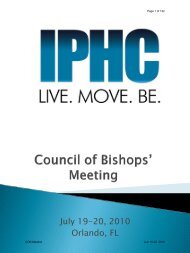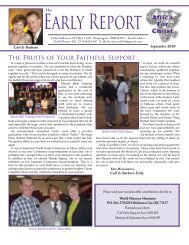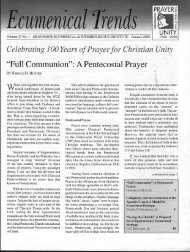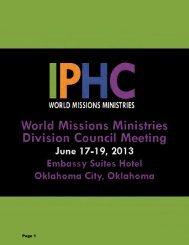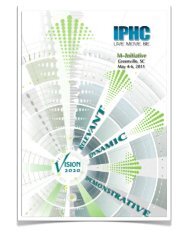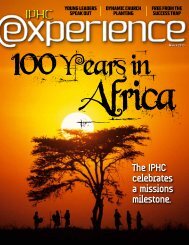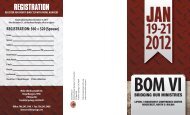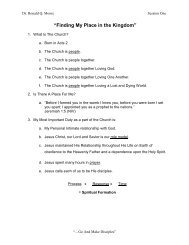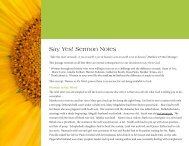IPHC Church Manual - Extension Loan Fund
IPHC Church Manual - Extension Loan Fund
IPHC Church Manual - Extension Loan Fund
Create successful ePaper yourself
Turn your PDF publications into a flip-book with our unique Google optimized e-Paper software.
Introduction<br />
and after the Civil War, the trend away from Holiness theology and<br />
experience was clearly established by the end of the nineteenth<br />
century.<br />
The last major Holiness revival among the Methodists and<br />
other mainline Protestant churches came after the formation of the<br />
National Holiness Association in Vineland, New Jersey, in 1867.<br />
But the resulting revival failed to bring the majority of the American<br />
church back to the Holiness cause. When the Southern Methodist<br />
<strong>Church</strong> rejected the Holiness Movement in 1894, over 25 new<br />
Holiness groups dedicated to the promotion of Holiness preaching<br />
and living formed in the United States.<br />
The Pentecostal Holiness <strong>Church</strong> was one of the groups<br />
begun after 1894 as a result of the controversies over the question<br />
of sanctification.<br />
The Pentecostal Movement<br />
During the last years of the nineteenth century, a conviction<br />
arose among many fervent people in the Holiness Movement that<br />
a fresh outpouring of the Holy Spirit was the church’s great need.<br />
As the new century was about to dawn, a general attitude of<br />
seeking for deeper and further spiritual grace seemed to permeate<br />
the movement. This cry for a “new Pentecost” was experienced in<br />
both Europe and America.<br />
The modern Pentecostal Movement had its origins in Topeka,<br />
Kansas, in a small Bible school conducted by Charles Fox<br />
Parham, a Holiness evangelist who began his ministry as a<br />
Methodist pastor. In 1901, Agnes Ozman, a student at Parham’s<br />
school, received the baptism in the Holy Spirit accompanied by<br />
speaking in tongues. Ozman became a member of the Fire-<br />
Baptized Holiness <strong>Church</strong>, which merged with the Pentecostal<br />
Holiness <strong>Church</strong> in 1911.<br />
The Pentecostal Movement received worldwide influence in<br />
1906 in Los Angeles, California, in the Azusa Street revival led by<br />
the black Holiness evangelist, William Joseph Seymour. From<br />
Azusa Street, the Pentecostal experience spread around the world<br />
as Holiness people by the thousands received the Pentecostal<br />
baptism with the Holy Ghost with the apostolic sign of speaking<br />
with other tongues.<br />
Not since the days of the early church had any revival<br />
movement spread so quickly and so far. In every continent,<br />
Holiness people flocked to altars to receive their own personal<br />
Pentecost.<br />
14




